You’ve given PALS… now what? Let’s explore using the NEW Emergent Reader Electronic Lesson Plan (ELP) as a way to organize a week’s worth of differentiated small group instruction for your emergent readers in the areas of Phonological Awareness, Concept of Word in Text, Alphabet Recognition, Naming, & Letter Sounds, and Beginning Consonant Contrasts.
Step #1. Identify emergent readers.
Look at your PALS-K data and your anecdotal observations. Emergent readers are students who…
- Are not yet automatic with letters and sounds
- Are developing rhyme awareness, syllable & word awareness, or beginning sound awareness
- Scribble, use letter-like symbols, random letters, or some initial consonants when writing
- Pretend read or are not yet accurate when pointing to memorized text
- Identify no, few, or even many words in context
- Identify no, few, or even some words out of context
Step #2. Create differentiated small groups.
Some of your emergent readers may be Developing COW-T and some of them may have Rudimentary COW-T. The very first page of the New Emergent Reader ELP can help you determine which COW-T stage is a better fit. Click on the “eye” to view the COW-T Stages document.

Use the COW-T Stages document to determine groups based upon those who have Developing COW-T and those who have Rudimentary COW-T. If you have any students with Firm COW-T, look into using the Beginning Reader ELP with those students.

Step #3. Use the New Emergent Reader ELP to create a week-long plan for each group.
There are four planning pages. You choose:
- A text, a COW-T stage, and focus letters
- A phonological awareness instructional activity
- Words for COW-T instructional activities
- Alphabet or beginning sounds instructional activities

Then you can print four Lesson Plan pages:
- Week’s Lesson Plan
- Personal Reader Text
- Word Cards
- Word List

There are three documents to help you differentiate instruction:
- COW-T Stages
- Personal Reader Routine
- Literacy Workstations

On the last page, you can print:
- Each individual lesson plan page
- All four lesson plan pages
- Teacher pages for selected instructional activities
- All supporting documents (100 pages)

Step #4. Implement your lesson plan.
Familiarize yourself with the instructional activities which you have selected for the week. As you teach, think about the feedback you give to your students. Specific feedback will help students learn more quickly.
PALS Resources
Note that you will need to open the New Emergent Reader ELP with Adobe Acrobat Reader DC. If you do not yet have it on your computer, see directions for downloading it in your PALS account. Here are all the resources on the Resources tab in your PALS account:
Plan Instruction page, Emergent Reader section:

Webinars page, Recorded Webinars section:

FAQs & How-to Documents page, Electronic Lesson Plan (ELP) section:

More questions? VKRP provides support via the online chat feature when you are in the system, via email vkrp@virginia.edu, and via toll free 866-301-8278 ext. 1.

